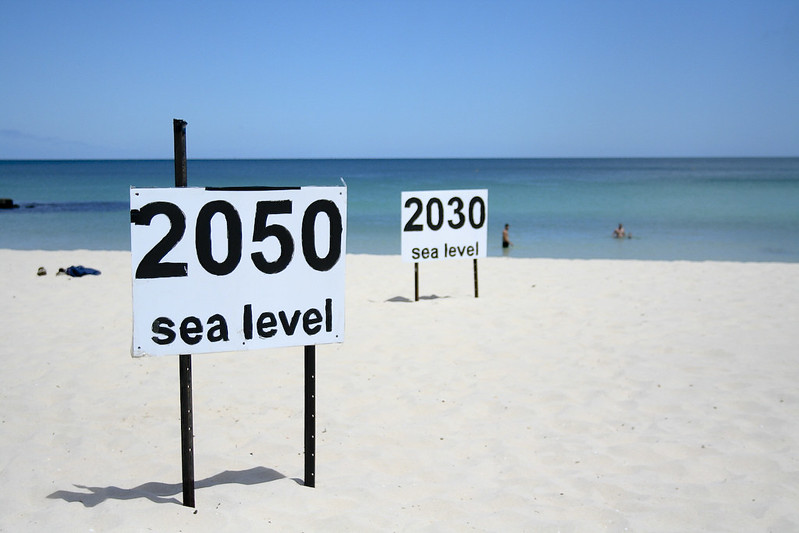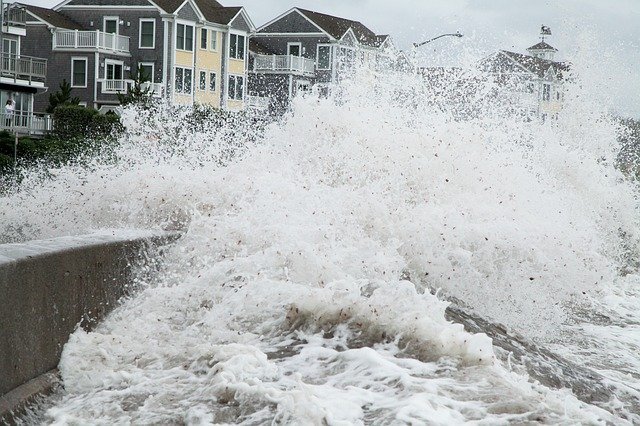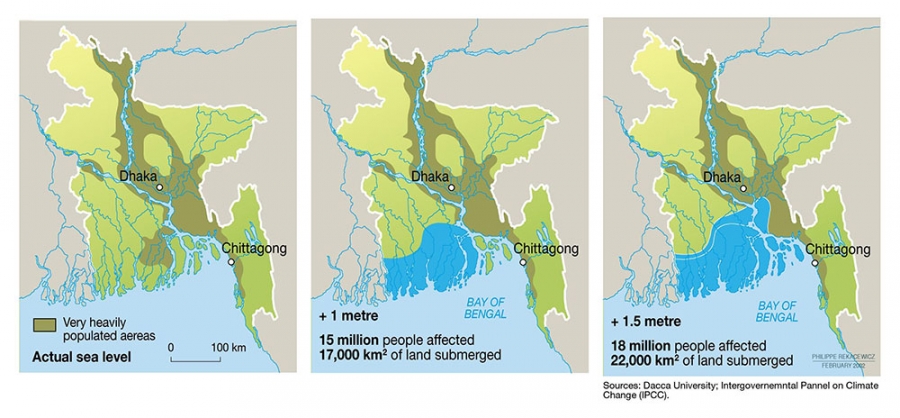 The International Panel Of Climate Change released a report today on the impacts of climate change.
The International Panel Of Climate Change released a report today on the impacts of climate change.
The results are in line with another study that projects that sea levels may rise by up to one foot along U.S coastlines by 2050.
Though this may not seem like much, even a few inches of sea-level rise can cause catastrophic effects. According to NOAA (National Oceanic and Atmospheric Administration), sea-level rise will increase coastal flooding during high tides and in the event of hurricanes.
Let us look at what causes sea levels to rise and what the impacts might be.
Why Are Sea Levels Rising?
There are two major factors that contribute to rising sea levels - thermal expansion and the melting of glaciers and ice sheets.
 As the name suggests, thermal expansion occurs when seawater expands as it heats up. A 2018 study found that thermal expansion may be responsible for as much as 50% of sea-level rise over the past 25 years!
As the name suggests, thermal expansion occurs when seawater expands as it heats up. A 2018 study found that thermal expansion may be responsible for as much as 50% of sea-level rise over the past 25 years!
Rising temperatures speed up the melting of mountain glaciers leading to increased runoff into the oceans. The ice sheets in Greenland and Antarctica are also melting at an alarming pace.
Over the past decade, Antarctica has lost around 252 billion tons of ice each year, while Greenland stands at 280 billion tons per year. In the meanwhile, Greenland is also seeing another trend. As water accumulates on top of melting ice sheets and seawater gathers below, the ice sheets are more easily slipping into the ocean.
The NOAA study links these phenomena to greenhouse gas emissions. By 2100, NOAA projects sea levels rise of 2 feet, and if we do not reduce emissions, we may face up to 3.5 to 7 feet!
A Cascade of Impacts
Coastal habitats are especially vulnerable to rising sea levels. If swamped with seawater, these fragile ecosystems will be hard-hit by erosion, flooding, and salt contamination. Biodiversity will also be impacted, as local species lose their habitats.
 In low-lying coastal areas, millions of people are at flood risk. Many in the Asian country of Bangladesh have already been forced to migrate to higher ground. Coastal cities like Miami, Florida, and Sausalito, California are facing more serious flooding at high tides.
In low-lying coastal areas, millions of people are at flood risk. Many in the Asian country of Bangladesh have already been forced to migrate to higher ground. Coastal cities like Miami, Florida, and Sausalito, California are facing more serious flooding at high tides.
As seawater inches closer, these cities may be at higher risk for infrastructure issues. Seawater can seep into and weaken building foundations, as well as bring down Internet connection in affected regions. It can contaminate sources of drinking water, while sewers and storm drains may no longer be effective.
Cities that are weakened by rising sea levels are at risk of higher damage from extreme weather events like hurricanes, which have also become more common due to global warming. Even land-locked states may be affected. Because most commerce is centered in coastal ports, nationwide supply chains for transporting goods may be disrupted.
The good news is scientists tell us that we can still prevent these worst-case scenarios if we act now and drastically reduce our greenhouse emissions.
Sources: NYTimes, NOAA, CNN, NPR, NASA, NatGeo







